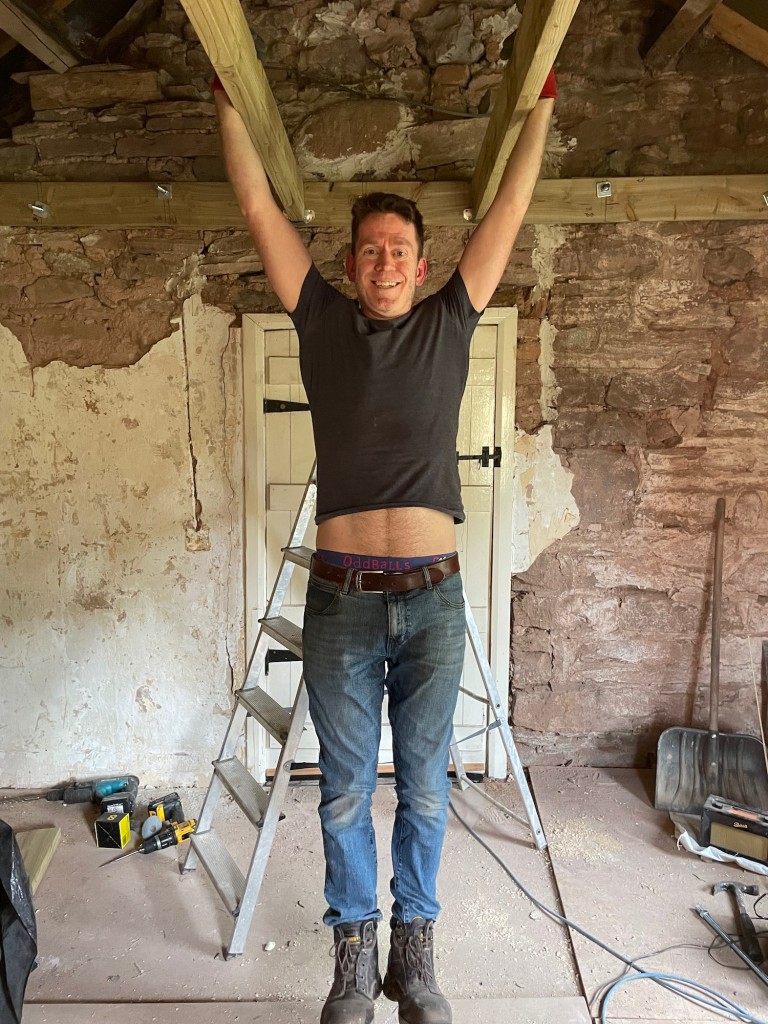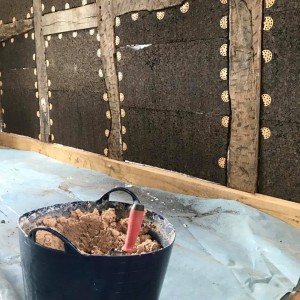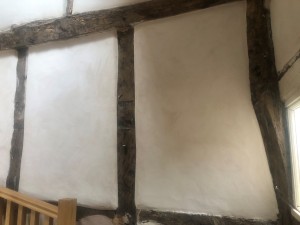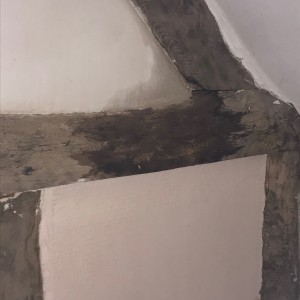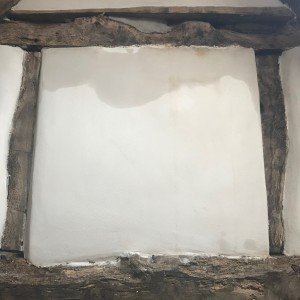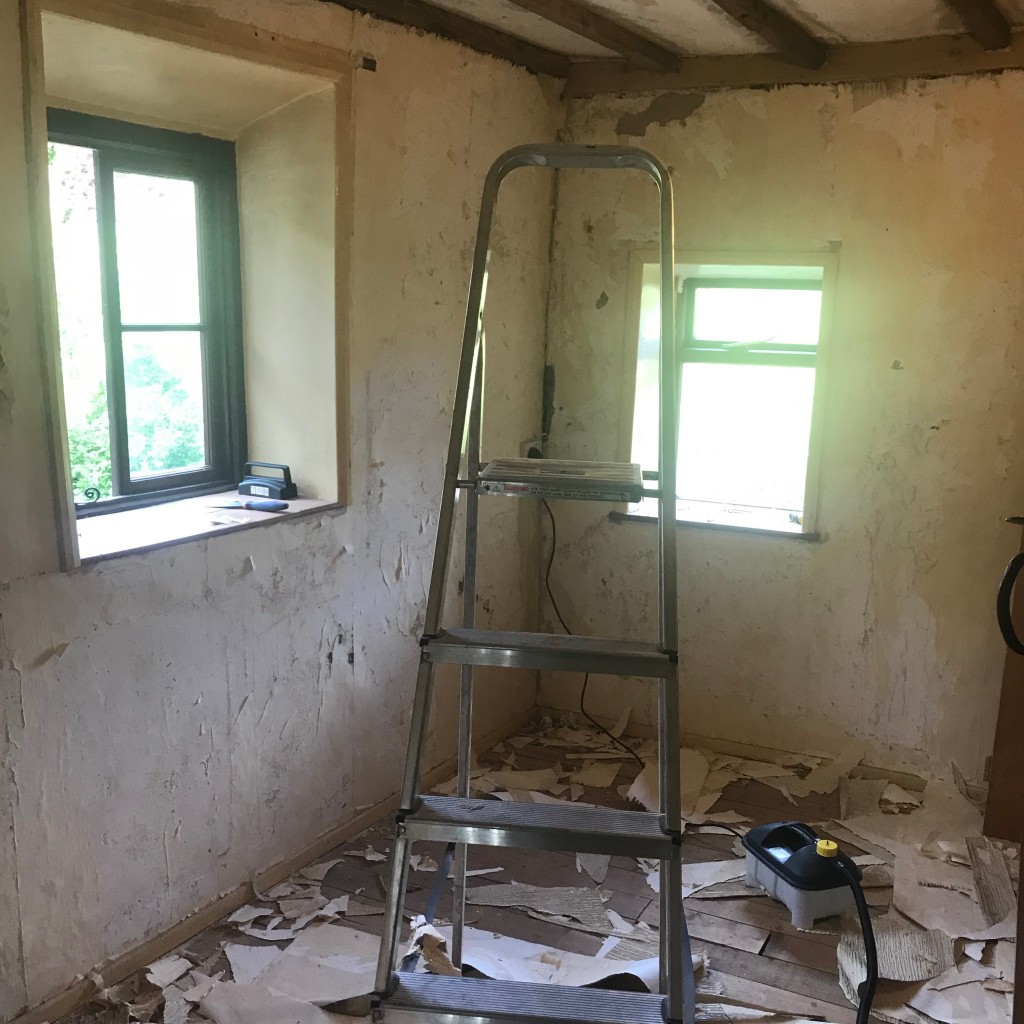It’s just hit me today that this bathroom is quite the undertaking. I mean, it’s not like we’re just ripping out an old bathroom and installing a new one. Maybe rerouting a few pipes. Bit of tiling.
Nope; we’re installing a full bathroom with shower wetroom area into a room that has never been a bathroom before and it is an epic project. So Imma stop moaning about how long it’s taking, and instead be impressed with us. Or roll my eyes at us. One of the two…
We are making a lot of mistakes. But that’s okay; we’re learning from them, and then making entirely new and exciting mistakes, and learning from those too. We’re realising that every single job we want to do requires us to have done three tasks previously, and each of those required pre-work too. It’s brain-melting.
And because we are not builders or plumbers or responsible adults, we’re freaking out about what we need to do, and massively overengineering everything. Remember our massive floor and ceiling joists that will probably outlast the heat death of the universe? Well, we may have gone slightly overboard with the stud walls too. I think Joe’s builder friend raised an eyebrow or two. But more on that in a moment.
We’ve essentially divided the bathroom into three parts:
- The main space, for the bath, sinks, massive houseplants, and an incredible utterly weird chair I’ve found in a local junk shop.
- The toilet cubby hole place.
- The shower cubicle.
We’ve built a stud wall divinding the shower and toilet areas, and then stud walled the back wall of the shower too, so we can put piping back there and build a niche into the wall. Then we straightened up the end wall that’s actually attached to the house with battens and marine ply.

Walls are juuuuuust a little wonky
You can see the amount of lean if you look at the bottom of the batten frame. This was our second attempt, by the way. The first time, we fixed the marine ply to it, then went away from the room for a few days. When we came back, we thought it looked a bit… off. It was. A spirit level showed us we weren’t even close to vertical, so it all had to come off. You might think we’re being super-fussy and we are, but we also know that if the walls aren’t vertical and square in the shower area, the tiling will look awful.
So we did it again, and got it cock on:

Ooh so satisfying
Then we built the stud wall that will form the end of the shower area and divide it from the toilet area. As you can see, it’s quite sturdy:

Studly stud wall
Then we did the same thing along the back wall, to create space for the pipework and to create a niche for bottles and soap and all the gubbins we use in a shower.

Scrubbing up good
We’ve built a niche and also a backboard to fix the shower valves to. This may be one of our mistakes, but if it turns out to be, we rectify it in future… we’ve decided to have the shower on the stud wall to the left, the part projecting into the room. But the shower valves will be on the back wall, so we can turn on the shower before getting into it—so we don’t get blasted with cold water.
However, there is going to be no way to remove the wall to get at the pipes should there be a leak—so we’re taking a bit of a risk here. We’ll obviously throughly pressure test everything but if we do have a leak, we’ll have to rip the wall apart to fix it. If that happens, we’ll relocate the valves and plumbing to the stud wall that protrudes, and install a removable panel so we can get at it. I dunno if we’re being foolish or not. Maybe future us will curse present us. Who knows!
Here’s the niches in progress:

Niches. Where there are riches, apparently.
And that is all for now. Join us again to find out how we manoever a massively heavy shower tray into place without destroying it and us…






















